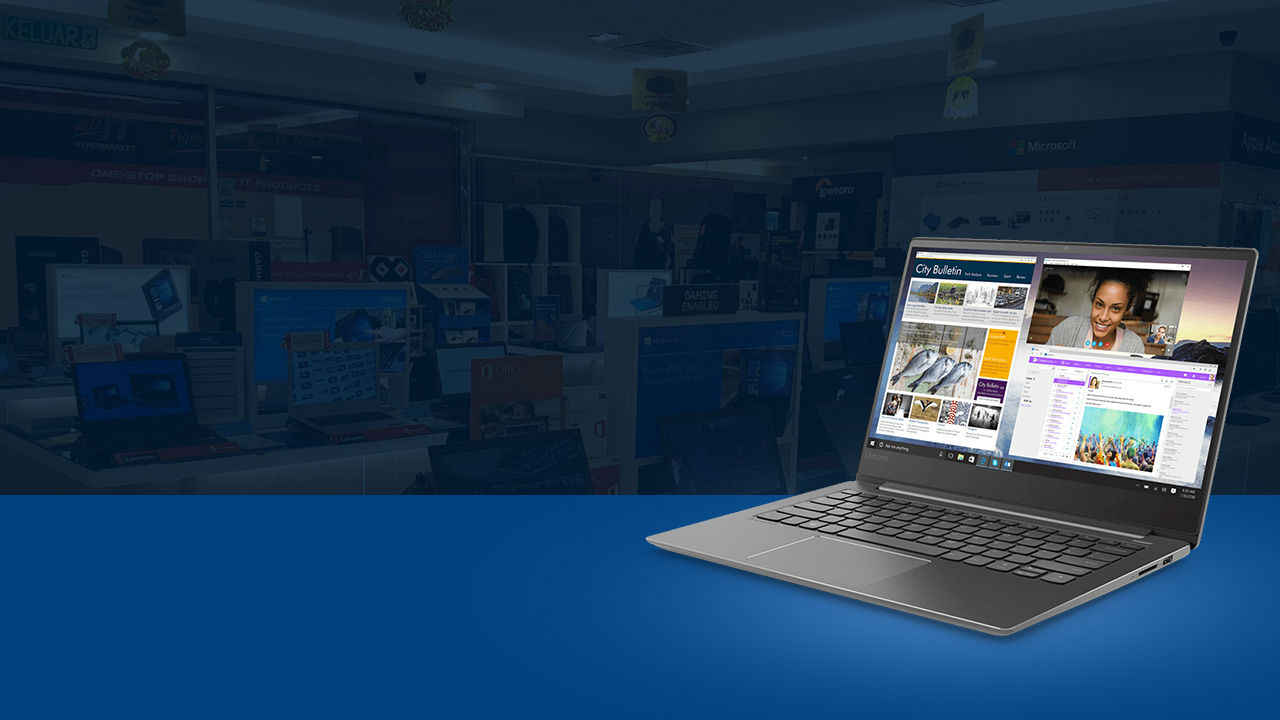5 checks to perform on a laptop at the showroom before buying
Buying a laptop from the showroom? Here's a list of what you should check before swiping your card. Read on to make a more educated purchase.

Sure, online stores may have taken over our shopping habits but the concept of brick and mortar businesses still exists, especially amongst laptop makers. In fact, shopping for a new laptop in a showroom is a more fulfilling experience. More often than not, what you see is what you'll get, which isn't always the case with online shopping.
 Survey
SurveySo, for the next time you're in a laptop showroom, be it for buying or just browsing, here's a short battery of tests you could perform on a model you think you want to get:
1. Check the display out thoroughly
The display of the laptop is what you're going to look at 95 percent of the time when you're using any laptop. So, be sure if what you're looking at is comfortable enough for your eyes. Turn the brightness up all the way and see if it's bright enough. If possible, hold the laptop under bright sunlight and see how much of the content on the screen is visible. A glossy finish on the display will make it harder to read text. A matte finish is better.
Next, leave the laptop in a fixed spot and move around it while continuing to look at the display. View the content in it from multiple angles. If the laptop in question features an IPS panel you should be able to read text without any trouble from horizontal angles close to 180 degrees, i.e., when you're standing almost perpendicular to the laptop. Then push the laptop lid back to see how far it'll go. If it goes back all the way to 180 degrees, it'll come in handy when you're on the bed or sofa. At its farthest angle check readability of text.
If it's a touchscreen, it's all the more important that the display fold out all the way to 180 degrees, if not farther into 'Yoga' positions. Check the touch response by writing and drawing on Paint 3D with a supported stylus. Ideally, if you're buying a laptop for scribbling it should support a stylus. Rest your palm against the screen to see if it's rejecting those unnecessary touches. Also, check the response to screen flicks. Scrolls should be smooth and free of delay.
2. Perform a timed cold boot and timed app launches
Ask the store assistant to let you perform a timed cold boot. It starts the laptop up with a fully cleared RAM and performs some self-tests. To do this on a laptop running Windows 10, open the command prompt (open the Start menu and type cmd to find it), and type 'shutdown /s /t 0' without the quotation marks and hit enter. This is to bypass Windows' Fast Boot feature, which is turned on by default. When the display goes off, unplug the laptop from power, reconnect power, and boot. From the moment you press the power button, begin running a stopwatch on your phone or watch. Stop the ticker when Windows has booted all the way to desktop and the mouse pointer seems responsive.
The elapsed time you see is what you should be okay with every time your new laptop boots up. You do not want a laptop that takes over 2 minutes to boot to desktop, unless you feel you can really be that patient. Try the same timed launch test for frequently used applications as well. The laptop in the store must have a browser like Chrome or Firefox. Time the first launch after boot and subsequent launches as well. If a browser window takes over 28 seconds to launch for the first time, it's too slow for any laptop.
Restarting is a better option than shutting down and then booting afresh because Windows 10 uses a Fast Boot feature, which won't give you an accurate time. If you try the timed boot test and you see a Windows update message on the demo laptop, stop the clock and curse your luck; there's nothing you can do but wait.
3. Get a feel of the keyboard and touchpad
Numbers and facts you see on the spec sheet online convey very little about what the keyboard on the laptop is actually like to use on a daily basis. Besides, some people like low-profile keys, and others, high-profile keys. So, only a practical test drive of the keyboard will reveal whether you find it comfortable or not. Begin the test by pressing down hard on all the keys of the keyboard. If you're seeing signs of flex, you're going to be in for a mushy typing experience. If it feels all right, proceed to the typing test.
Open an instance of WordPad and type out multiple short paragraphs of text. While doing so, analyse the following characteristics: travel, resistance, and shape of the keys, and range of functionality. Key travel refers to how deep the keys go when pressed. On paper, 1.5mm is the ideal key travel for comfort, but only trying the keyboard out for yourself will tell you if that's true. Resistance refers to how hard the keys are to press. They must be neither too hard nor too soft. Keys that are too easy to press can lead to frequent mistypes. Key shape is important so you recognise the centre position of the keys using only your finger. Flat keys make it hard to recognise and keys with a dimple make it easier. Also ensure the pitch, or the distance between the keycaps, is ideal for your fingers. If you're making too many mistakes while typing, it means your fingers aren't finding the right keys naturally. If you're repeating keystrokes, it means your fingers aren't registering them well because of a resistance mismatch.
In addition to these parameters, ensure that the keyboard has dedicated buttons for Home, Page Up, Page Down, and End functions if you're into a lot of text manipulation. If you're typing a lot of documents and emails every day, you might find it a pain to use these functions using a key combination. Furthermore, if you're going to use the laptop for programming, check if the F-keys on the topmost row are lockable. Conclude the test by trying out the touchpad. Check the hardness of the left- and right-mouse click buttons; you don't want to press hard buttons. Try multi-finger swipes and taps; they should seem effortless. Windows 10 supports these gestures if the touchpad being used is a precision unit. To confirm if it is in fact a precision unit, head to the Touchpad section in Windows Settings and look for the line that reads, 'Your PC has a precision touchpad.'
4. Make the speakers cry
A laptop showroom is a good place to test the speakers of a laptop because it's usually sufficiently noisy, like most outdoor places. If audio quality through the laptop speakers is important to you, turn the volume up to full to check how loud the laptop speakers can get. If there's an internet connection available, try playing your favourite tracks. If there isn't one, you should be able to try your personal collection with the help of a flash drive.
There are some things a laptop's speakers mustn't do: they mustn't crackle when the volume is turned up. Even if the audio isn't as loud as you'd expected it to be, ensure it doesn't break up. Next, low frequencies must be well handled. It's understandable if bass output is limited because laptops generally have small speaker drivers, but it mustn't be forced or sound blunt. Watch out for signs of bottoming out from the speaker drivers when playing music with sharp thumps.
Lastly, don't fall for the labels of fancy names of audio technology companies blindly. Just because the laptop sports a badge that reads 'harman/kardon' or 'Dolby' doesn't mean it's going to have great sound. In some cases the audio system on the laptop is only validated by companies like these and not designed by them. There's nothing like a practical test to tell you if the speakers on a laptop are good or bad.
5. Ensure upgradeability of RAM and hard drive
I can't stress enough on this point. Even if you're buying a laptop with only 4GB of RAM because the model with 8GB is out of the reach of your budget at the moment, please ensure that the laptop is upgradeable. If the RAM on the laptop is soldered, you won't be able to upgrade it. If it has a user-accessible RAM slot you can always swap the 4GB RAM chip for an 8GB one at your convenience. If it has two RAM slots, you have more flexibility.
The same rule goes for hard drives as well. If you know that your hard drive is upgradeable, you can always switch to a Solid-State Drive later on, should you feel the need for speed. The showroom is an ideal place to find out if a laptop is upgradeable in this way, especially if you can't out find the answer online. Ask the store assistant to lend you the user manual for the model you're buying. In it, you should be able to see a list of supported RAM and storage options.
Vignesh Giridharan
Progressively identifies more with the term ‘legacy device’ as time marches on. View Full Profile

